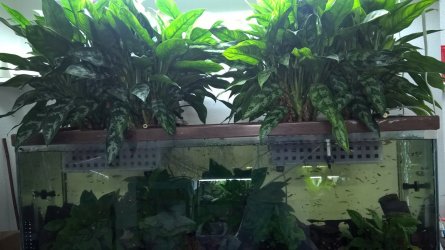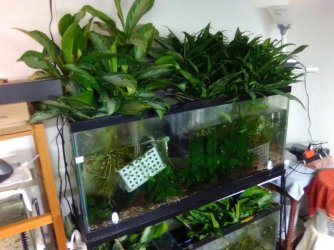Hello Gary. I set this up in 2018, so I'll need to rely on my recall. This project was intended to be fun and interesting, not work. So, I wasn't interested in keeping a log or journal. I simply wanted to see if the experiment worked. And, it really does. You never have to change the tank water, ever. I tested the tank water periodically, when I set up the system. I never changed any tank water, but I had just a few fish in the beginning. All I can tell you is this, the plants kept the tank water within acceptable limits for the fish. I knew that if the nitrates got too high, the fish would stop reproducing. That never happened, the fish population grew fairly rapidly. The interesting part was, as the fish population increased, so did the size of the plants. In fact the plants got so big, the roots grew through the holes in the baskets and then the main roots, grew roots of their own. After a few years, the root systems got too thick. Thankfully, I kept very small fish, so where still enough room for them to swim. As you can see in the photo, I didn't take out the bottom plants, they grew fine. Had I realized how much the "Ag" plants would grow, I'd have removed the bottom plants to provide more room. This was a fun and interesting project. I believe I have some other photos of some of the other tanks I kept with these plants. I decided to go to more traditional tanks, because I was going through 10 to 12 gallons of distilled water a week, because of all the evaporation from the open tanks. It wasn't the cost, it was going to the store to get the distilled water and the store would be out of stock. Got tired of that.
10 Tanks (Now 11)



